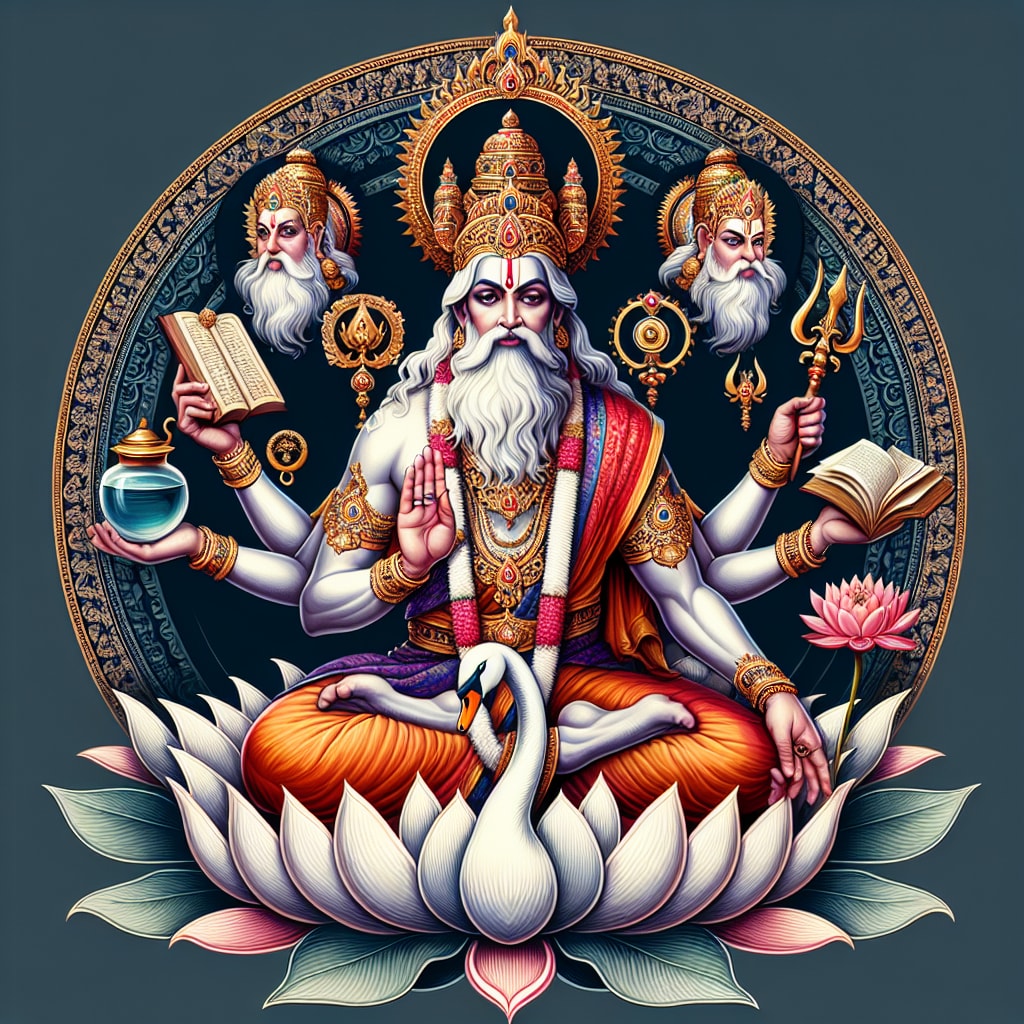In the Bhagavad Gita, Brahma is intricately woven into the narrative where Krishna, an incarnation of Vishnu, imparts divine knowledge to the warrior prince, Arjuna. Although Brahma is not a central character in the Bhagavad Gita, his presence is felt through subtle references. For instance, when Krishna speaks of the eternal soul, it is often perceived as being part of Brahma's infinite creation.
In the grandeur epic of the Mahabharata, Brahma is portrayed as a cosmic entity, symbolising the transcendence of earthly limitations. His omnipresence manifests through the myths interlaced in the tale, with several characters invoking Brahma's power and wisdom. Brahma's role as the universe's architect aligns with various themes, including destiny, karma, and dharma (moral order), pivotal to the epic's structure and philosophy.
Brahma's representation in Sanskrit literature is consistent with his image in the epic and the Gita, often explored in hymns, prayers, and discursive texts related to theology and cosmology. As the divine creator, Brahma is depicted as having four faces, indicative of the four Vedas, and four arms, representing the four Yugas or time periods of the Earth.
Despite Brahma's prominence in the early Vedas, he is less frequently worshiped compared to Vishnu and Shiva in devotional practices today. Philosophically, Brahma symbolises Brahman, the ultimate reality or supreme cosmic power in Hinduism, elucidating the indivisible oneness of the universe.
Thus, Brahma, as portrayed in the Bhagavad Gita, the Mahabharata, and Sanskrit literature, offers invaluable insights into Hindu cosmology and spiritual philosophy while reinforcing substantial perspectives on life, death, and the eternal cycle of existence.

